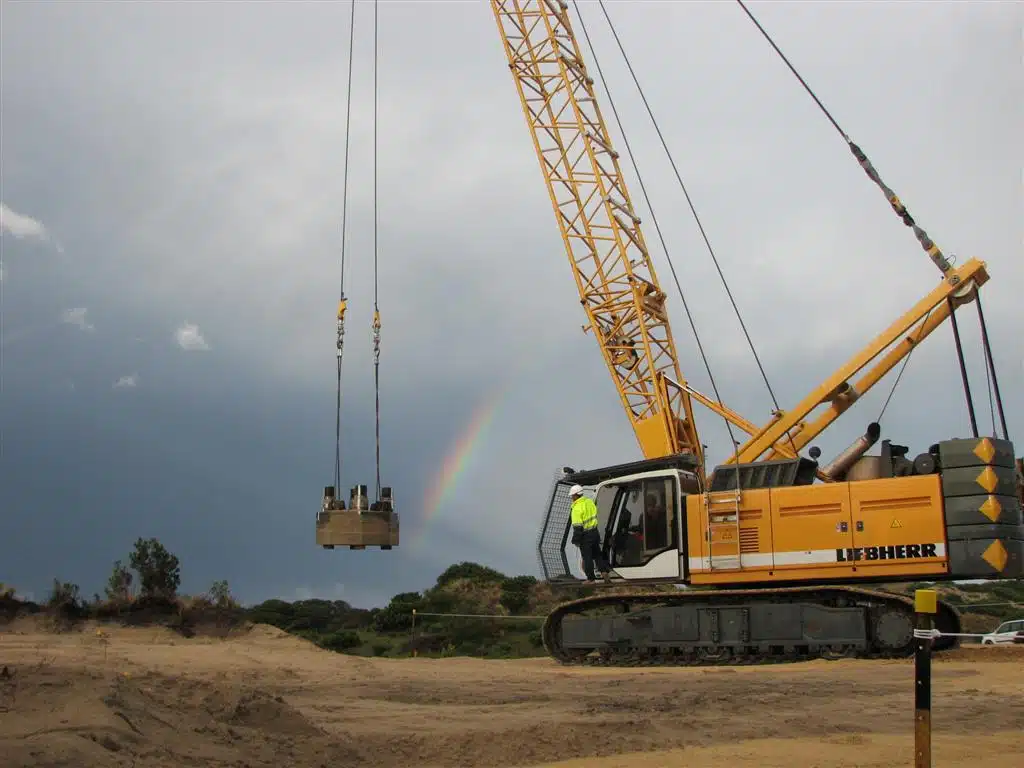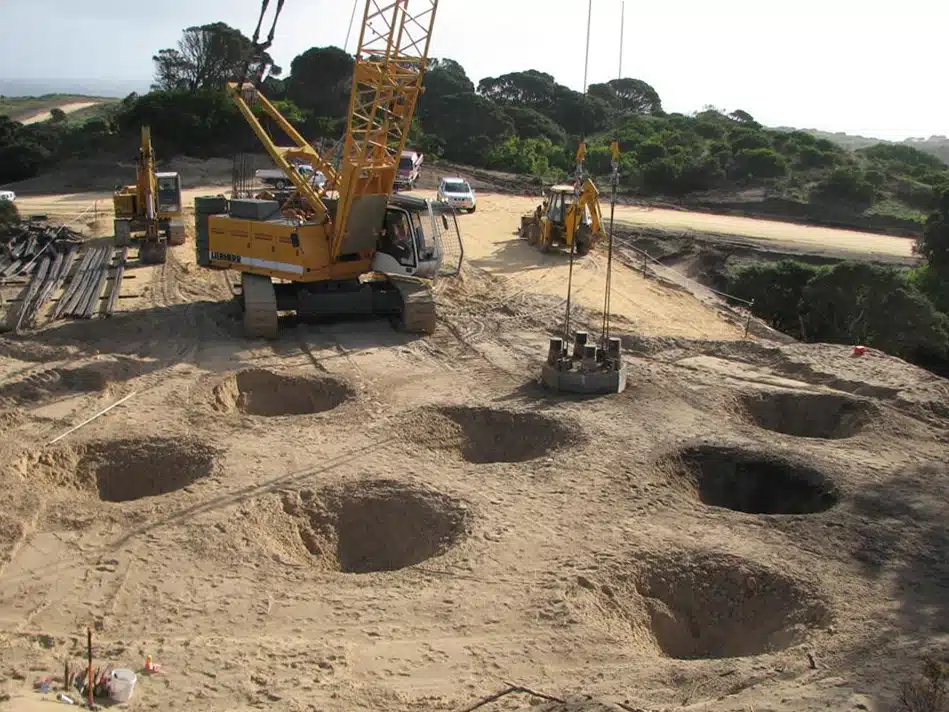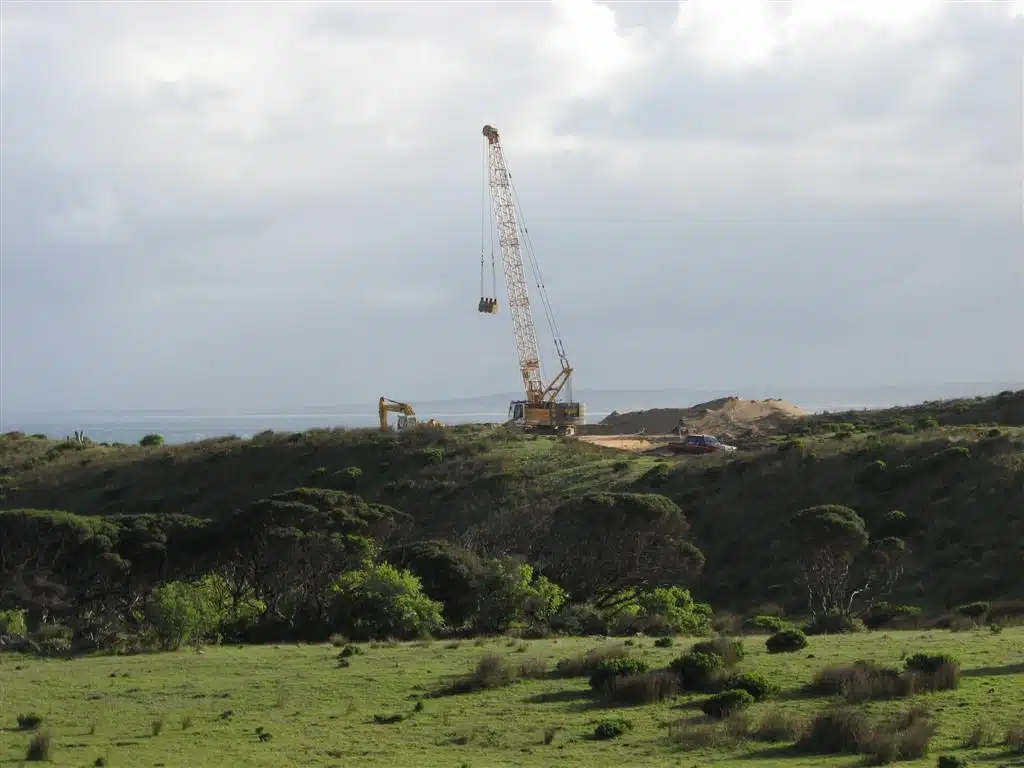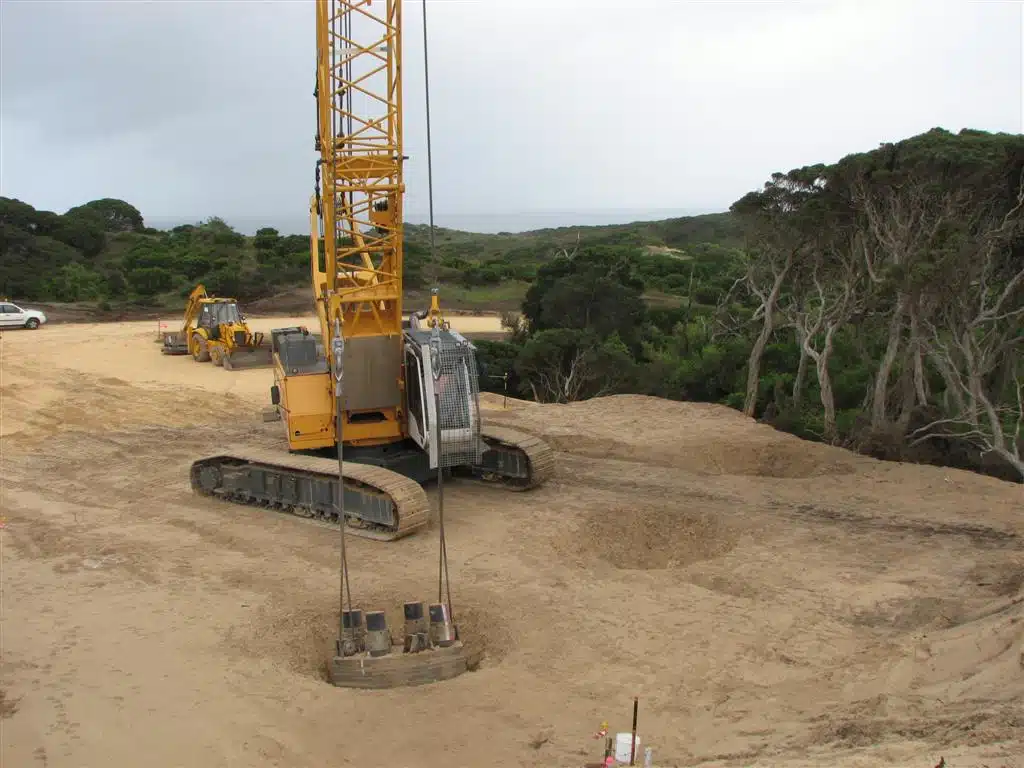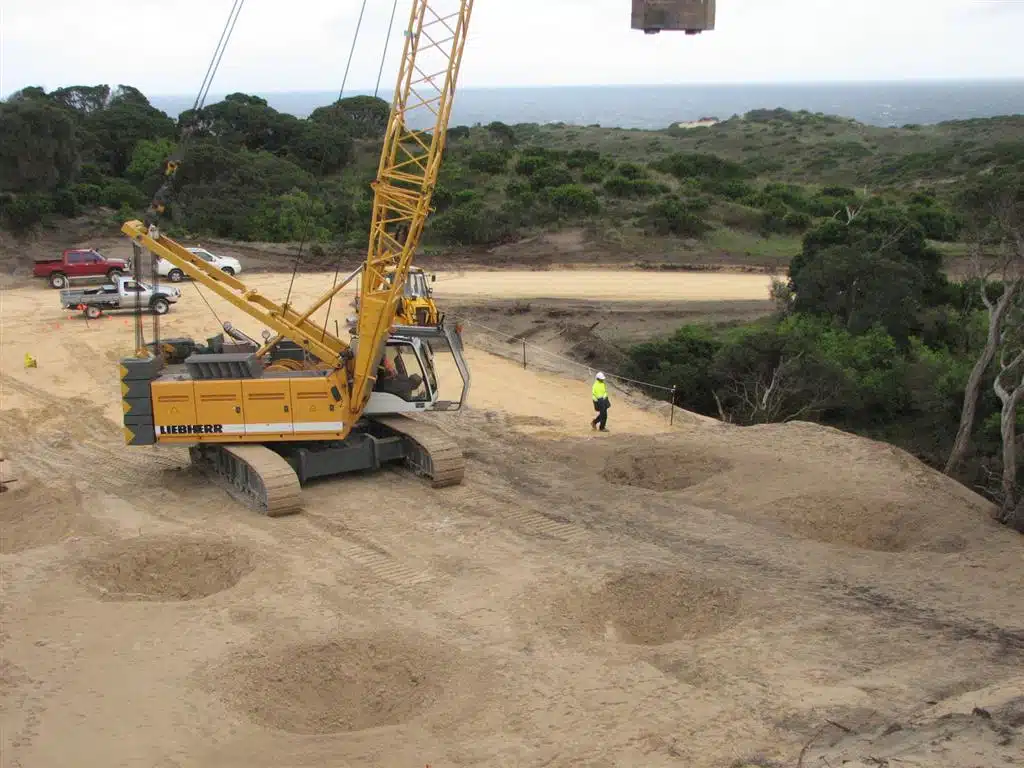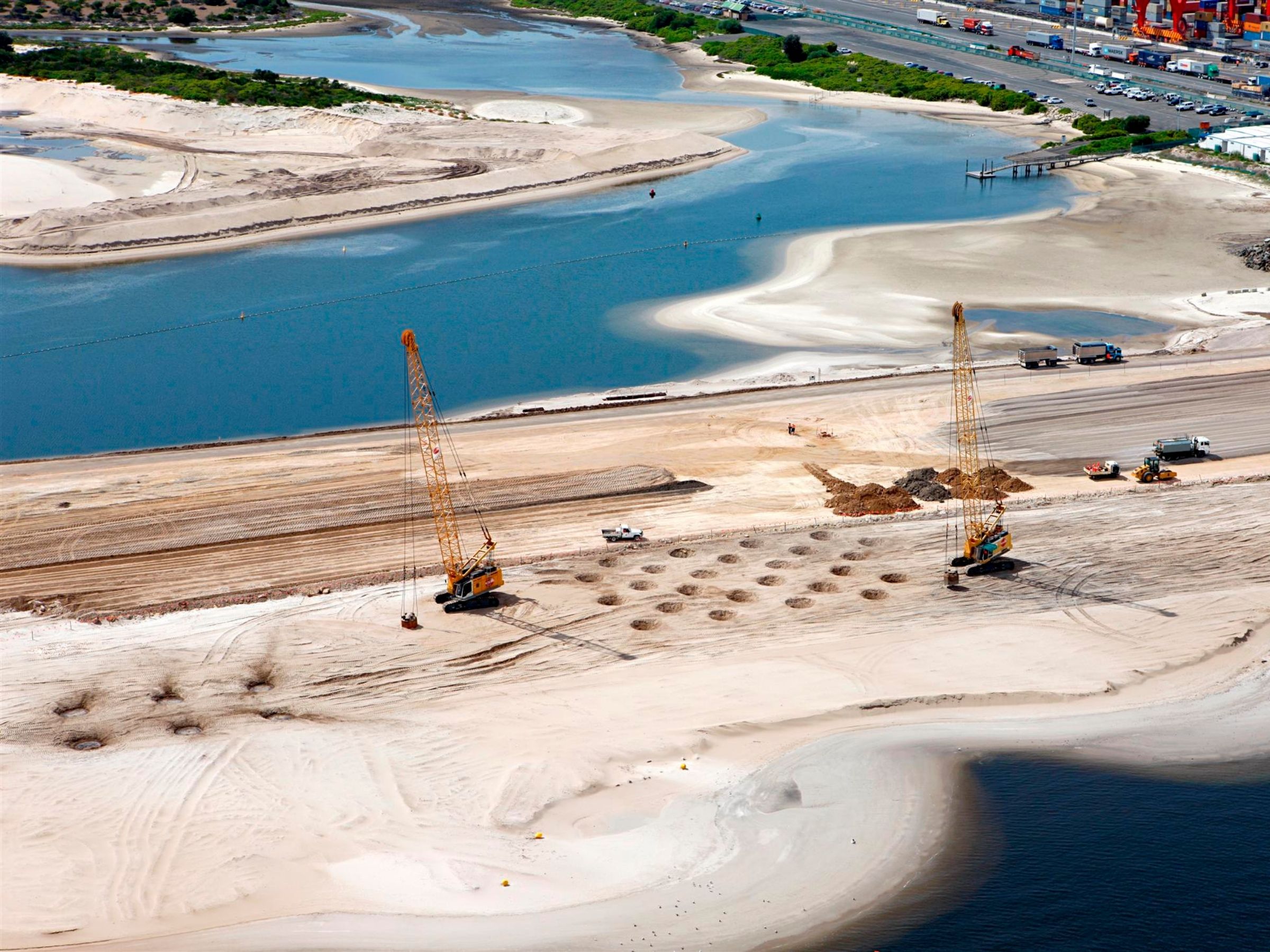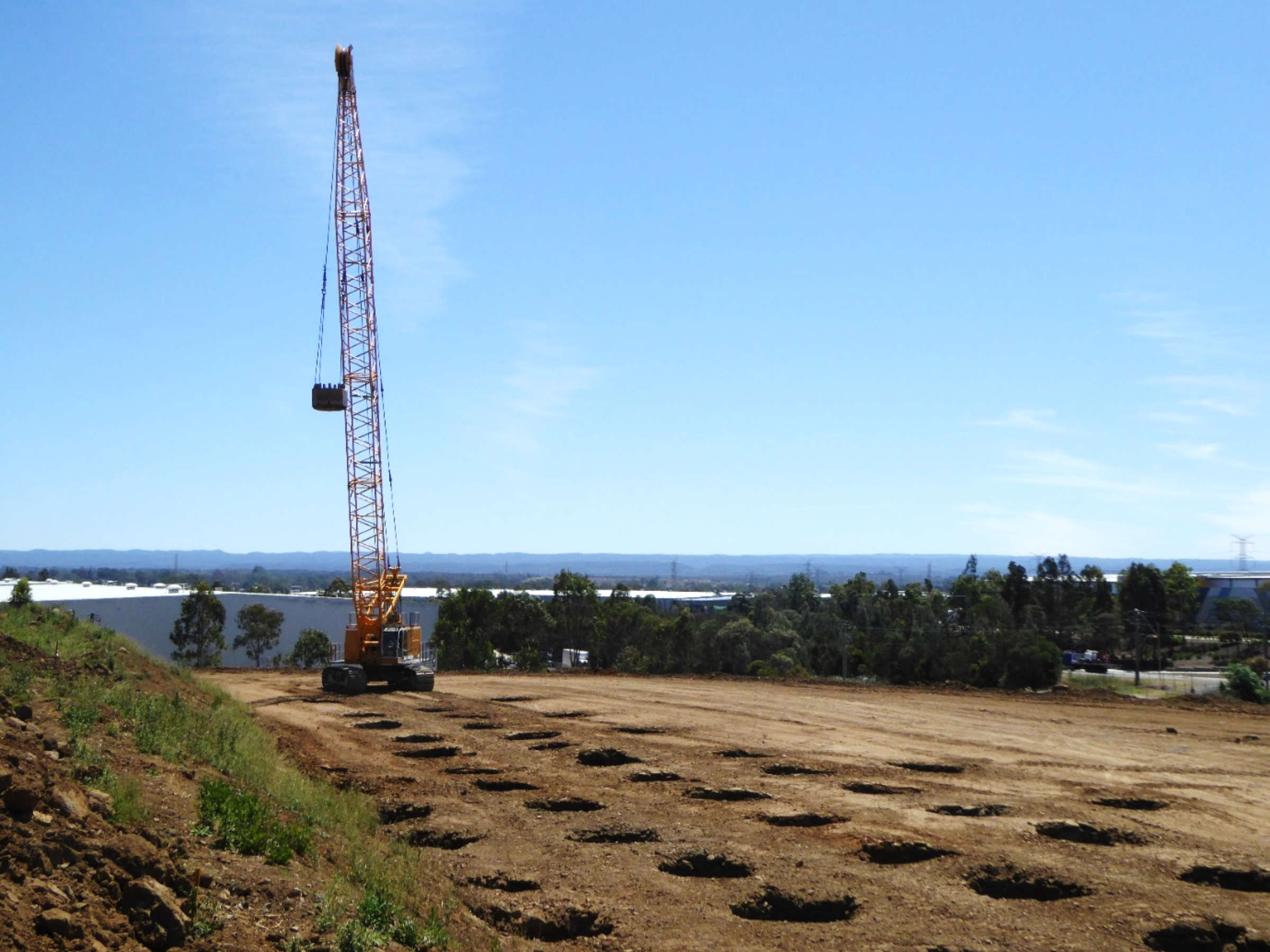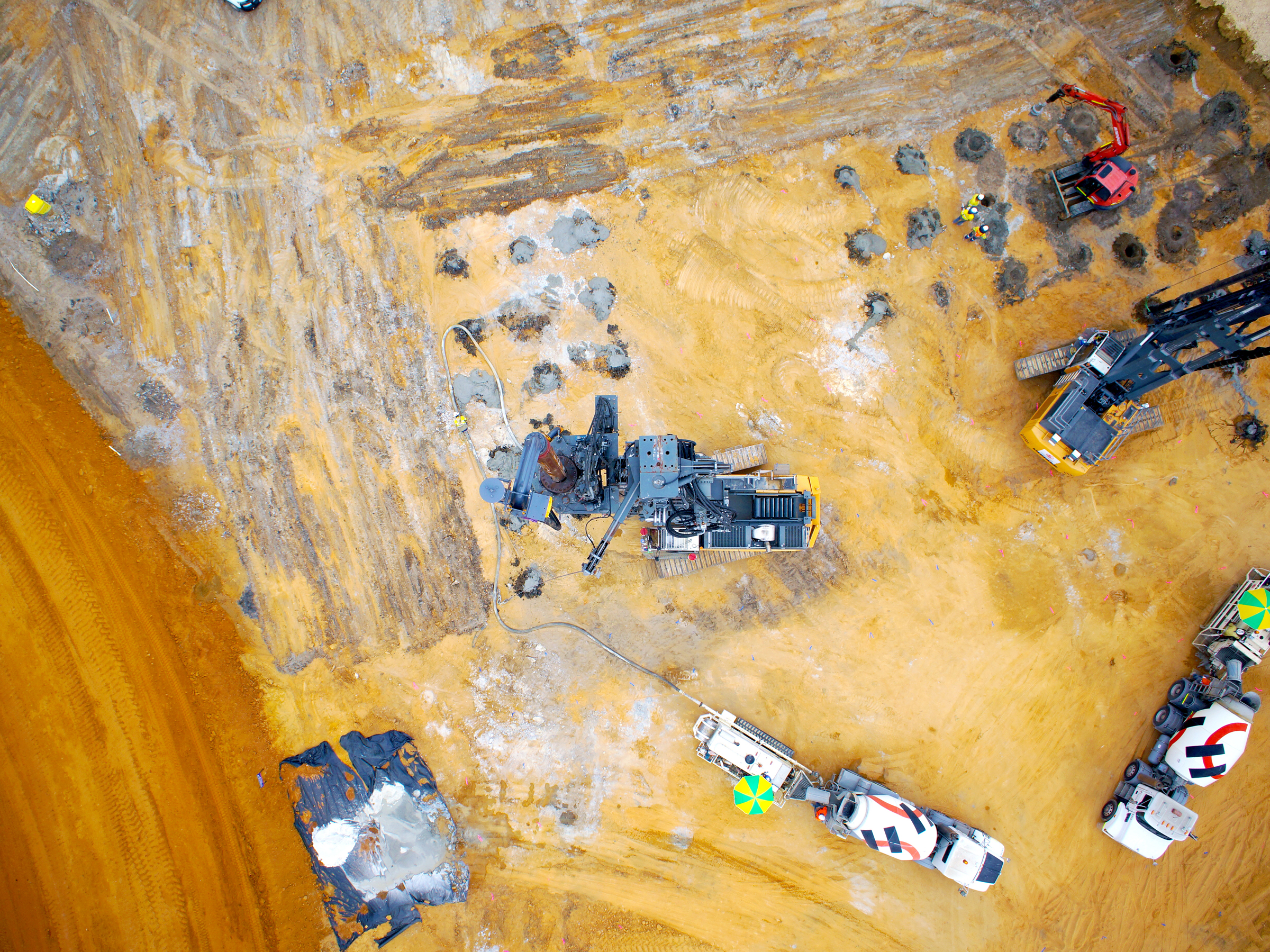Project Metrics:
- Ground Improvement Method: Dynamic Compaction
- Foundation Size: 14m diameter pad footings, 3m deep
- Soil Condition: Variable-strength dune sands, up to 10 metres deep
- Turbines: 29 Units
- Capacity: 2MW per turbine (total 58 MW)
- Tower Height: 67 m
- Blade Length: 33m
Project Overview:
The second phase of the Portland Wind Farm project features 29 wind turbines, each delivering up to 2 MW of renewable energy. Standing at 67 metres with 33-metre-long blades, these turbines are supported by substantial pad footings measuring 14 metres in diameter and extending around 3 metres below ground level.
Site investigations revealed variable-strength dune sands, up to 10 metres deep, formed from local limestone deposits. Ten turbine locations were found to have loose, compressible soils that posed a challenge for the gravity base foundation system.
To address this, Menard applied Dynamic Compaction – a ground improvement technique pioneered by Louis Ménard – to enhance the engineering properties of the sands. This method ensured the safe transfer of turbine loads to the foundations without the need for piles, delivering a cost-effective and efficient foundation solution.
Dynamic Compaction (DC) was selected as the most effective and practical method for ground improvement at these locations. Menard Oceania was subsequently contracted by the local foundation works provider to design and execute the Dynamic Compaction program. This process involved compacting the ground to depths ranging from 3 metres up to 10 metres below the proposed foundation levels.
Utilising a robust 17-tonne pounder, Menard successfully completed the ground improvement works, customising the Dynamic Compaction specifications to meet the varied depth requirements across different turbine sites. This tailored approach ensured optimal stability and structural integrity for the wind turbines, supporting their long-term operational efficiency and safety.


